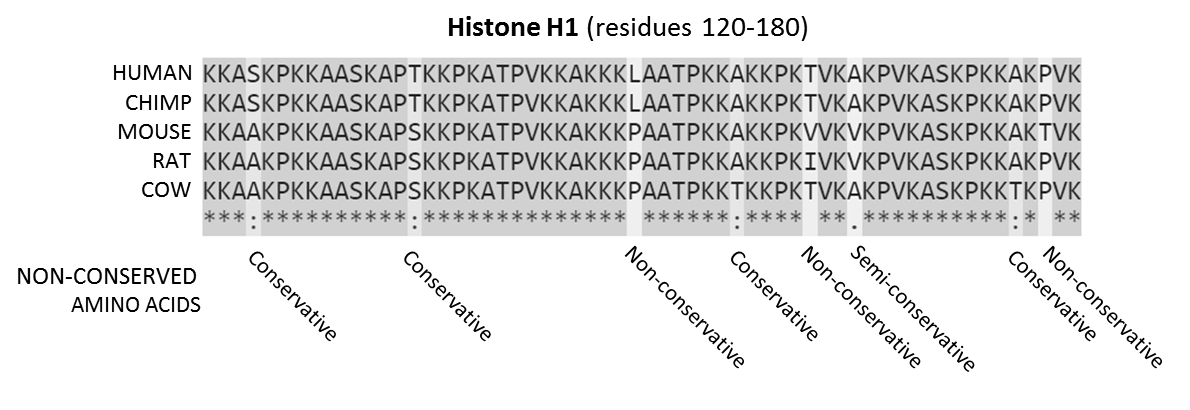radical replacement on:
[Wikipedia]
[Google]
[Amazon]
A conservative replacement (also called a conservative mutation or a conservative substitution) is an
 There are 20 naturally occurring amino acids, however some of these share similar characteristics. For example, leucine and
There are 20 naturally occurring amino acids, however some of these share similar characteristics. For example, leucine and
amino acid replacement
Amino acid replacement is a change from one amino acid to a different amino acid in a protein due to point mutation in the corresponding DNA sequence. It is caused by nonsynonymous missense mutation which changes the codon sequence to code other a ...
in a protein that changes a given amino acid to a different amino acid with similar biochemical properties (e.g. charge, hydrophobicity and size).
Conversely, a radical replacement, or radical substitution, is an amino acid replacement that exchanges an initial amino acid by a final amino acid with different physicochemical properties.
Description
 There are 20 naturally occurring amino acids, however some of these share similar characteristics. For example, leucine and
There are 20 naturally occurring amino acids, however some of these share similar characteristics. For example, leucine and isoleucine
Isoleucine (symbol Ile or I) is an α-amino acid that is used in the biosynthesis of proteins. It contains an α-amino group (which is in the protonated −NH form under biological conditions), an α-carboxylic acid group (which is in the deprot ...
are both aliphatic, branched hydrophobes. Similarly, aspartic acid
Aspartic acid (symbol Asp or D; the ionic form is known as aspartate), is an α-amino acid that is used in the biosynthesis of proteins. Like all other amino acids, it contains an amino group and a carboxylic acid. Its α-amino group is in the pro ...
and glutamic acid
Glutamic acid (symbol Glu or E; the ionic form is known as glutamate) is an α-amino acid that is used by almost all living beings in the biosynthesis of proteins. It is a non-essential nutrient for humans, meaning that the human body can synt ...
are both small, negatively charged residues.
Although there are many ways to classify amino acids, they are often sorted into six main classes on the basis of their structure and the general chemical characteristics of their side chains (R groups).
Physicochemical distances aim at quantifying the intra-class and inter-class dissimilarity between amino acids based on their measurable properties, and many such measures have been proposed in the literature. Owing to their simplicity, two of the most commonly used measures are the ones of Grantham (1974) and Miyata et al (1979). A conservative replacement is therefore an exchange between two amino acids separated by a small physicochemical distance. Conversely, a radical replacement is an exchange between two amino acids separated by a large physicochemical distance.
Impact on function
Conservative replacements in proteins often have a better effect on function than non-conservative replacements. The reduced effect of conservative replacements on function can also be seen in the occurrence of different replacements in nature. Non-conservative replacements between proteins are far more likely to be removed by natural selection due to their deleterious effects.See also
*Segregating site Segregating sites are positions which show differences ( polymorphisms) between related genes in a sequence alignment (are not conserved). Segregating sites include conservative, semi-conservative and non-conservative mutations.
The proportion of ...
* Ultra-conserved element
* Sequence alignment
In bioinformatics, a sequence alignment is a way of arranging the sequences of DNA, RNA, or protein to identify regions of similarity that may be a consequence of functional, structural, or evolutionary relationships between the sequences. Alig ...
* Sequence alignment software
References
{{Mutation Biochemistry Amino acids